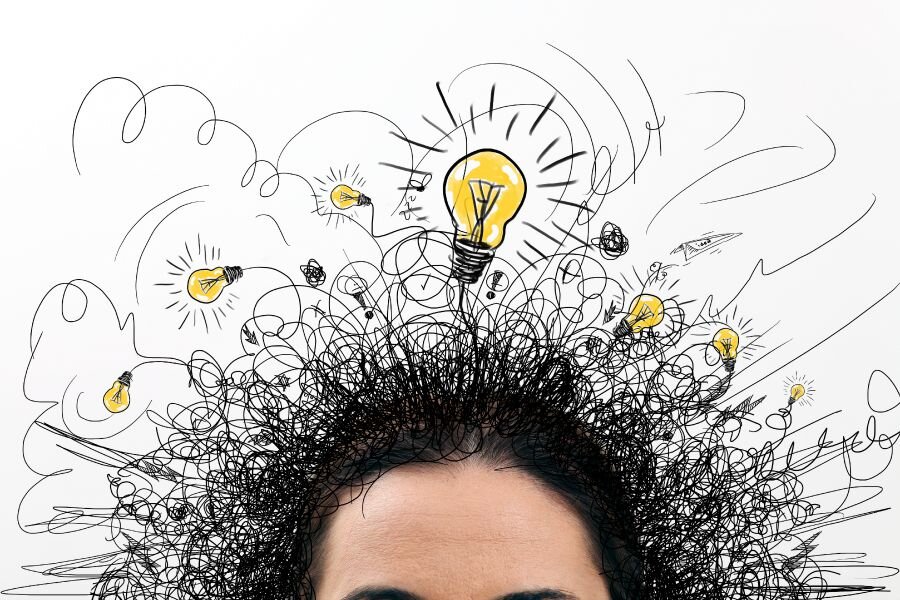If you are one of the many people who struggles with ADHD, you know that finding coping mechanisms that work is essential to your success. There are a lot of different strategies out there, but not all of them work for everyone. In this blog post, we will discuss 12 coping mechanisms that have been proven to be effective for people with ADHD. We will also provide advice on how to find the strategies that work best for you!
Contents
- 1 Defining ADHD
- 2 Top 12 ADHD Coping Mechanisms
- 2.1 Set realistic goals
- 2.2 Create a routine
- 2.3 Incorporate physical activity
- 2.4 Take advantage of technology
- 2.5 Practice relaxation techniques
- 2.6 Find other outlets
- 2.7 Join support groups
- 2.8 Use handy tools and resources
- 2.9 Track your symptoms
- 2.10 Dabble in humor
- 2.11 Refrain from multitasking
- 2.12 Be a clock watcher
- 3 Things To Keep In Mind
- 4 Conclusion
Defining ADHD
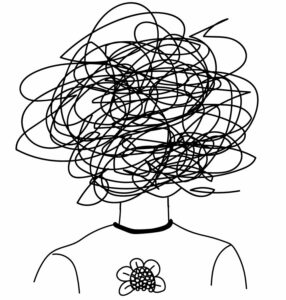 When we say ADHD, the first picture in our head is of a little boy who can’t sit still in class and is always getting into trouble. However, this is not an accurate representation of what ADHD actually is. ADHD is a neurodevelopmental disorder that affects both children and adults. It is characterized by problems with executive functioning, which includes the ability to plan, organize, and complete tasks. People with ADHD may also have trouble with impulsivity and hyperactivity.
When we say ADHD, the first picture in our head is of a little boy who can’t sit still in class and is always getting into trouble. However, this is not an accurate representation of what ADHD actually is. ADHD is a neurodevelopmental disorder that affects both children and adults. It is characterized by problems with executive functioning, which includes the ability to plan, organize, and complete tasks. People with ADHD may also have trouble with impulsivity and hyperactivity.
Based on the major defining characteristics, ADHD is of three types.
- The first type is called predominantly inattentive ADHD. This means that a person has more symptoms of inattention than hyperactivity or impulsivity.
- The second type is called predominantly hyperactive-impulsive ADHD. This means that a person has more symptoms of hyperactivity and impulsivity than inattention.
- The third and final type is called combined ADHD. This means that a person has an equal number of symptoms of inattention, hyperactivity, and impulsivity.
All of these types of ADHD can be diagnosed in both children and adults. It is also often misdiagnosed or not diagnosed at all. This is because the symptoms can be different for everyone and they can vary depending on the person’s age and environment.
Top 12 ADHD Coping Mechanisms
Coping mechanisms are different for everyone. Some people with ADHD may find that medication is the best option for them, while others may prefer to use natural strategies. There is no wrong answer, and what works for one person may not work for another. The important thing is to find what works best for you and stick with it!
Here are 12 coping mechanisms that have been proven to be effective for people with ADHD:
Set realistic goals
When one has ADHD, they have an aspiration to be perfect which often leads to disappointment. It is important to set goals that are achievable and realistic. This can help to prevent feelings of frustration and failure. There is also a constant sense of comparison with others, which can further fuel the inferiority.
It is important to remember that others do not face the same difficulties as yours. ADHD is a real disorder that can make it difficult to achieve goals that may seem simple to others. So, don’t get discouraged, and give yourself credit for the progress you make!
When setting up goals, keep in mind that it is best to start small. Once you accomplish these goals, you can then move on to bigger ones. Also, be sure to write your goals down and put them in a place where you will see them often. This will help to keep you motivated and on track.
Create a routine
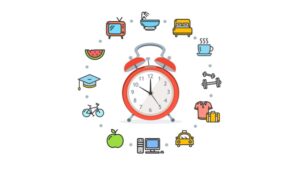 One of the best ways to cope with ADHD is to create a daily routine and stick to it as much as possible. This can help to structure your day and make it more predictable, which can in turn help to reduce some of the anxiety and stress that can be caused by ADHD.
One of the best ways to cope with ADHD is to create a daily routine and stick to it as much as possible. This can help to structure your day and make it more predictable, which can in turn help to reduce some of the anxiety and stress that can be caused by ADHD.
When one has a structure placed in the right place, it aids ADHD tendencies by providing a sense of order and calm. It’s essential to have some predictability in your life when so many other aspects are out of your control. When creating routines, it is important to make room for flexibility and spontaneity as well. If your routine is too rigid, it may be difficult to stick to it and may end up causing more stress than it relieves.
It is also important to allow yourself grace, compassion and understanding. Accept that you might not be able to do everything that other people can and that’s okay. There is no shame in not owning up to a little setback.
Incorporate physical activity
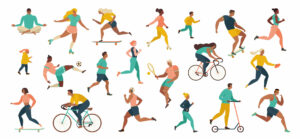 Physical activity can help alleviate some ADHD symptoms. It can improve focus, concentration, and executive functioning skills. One study found that just 20 minutes of moderate exercise can immediately improve attention and memory in children with ADHD.
Physical activity can help alleviate some ADHD symptoms. It can improve focus, concentration, and executive functioning skills. One study found that just 20 minutes of moderate exercise can immediately improve attention and memory in children with ADHD.
Exercise also impacts our hormonal function. When we move our bodies, we release endorphins, which have mood-boosting and pain-relieving properties. For people with ADHD, regular exercise can help improve symptoms of anxiety and depression.
In addition to improving mental health symptoms, exercise also has physical health benefits. It can help reduce the risk of developing chronic diseases, such as heart disease, stroke, and type II diabetes. It can also help improve sleep quality and duration.
When using exercise as an ADHD coping mechanism, it is essential to note the key element: consistency. It is important to find an exercise routine that works for you and stick with it. Even if it’s just a 20-minute walk around the block, making physical activity a regular part of your routine can have a significant impact on your ADHD symptoms.
Take advantage of technology
Today’s day and age have seen a surge in the number of technological advancements. While this definitely carries advantages, for people with ADHD, it may become a problematic matter. This is because they may have an easier time getting distracted by their phone or social media notifications.
An easy way to stay on top of things is by setting timers or alarms. This will help you stay focused and on task while also keeping track of the time. In addition, there are many apps that can help with organization and time management.
Another great way to use technology to your advantage is by listening to music. Studies have shown that music can help improve focus and concentration. It can also reduce anxiety and increase productivity. If you find yourself struggling to focus, try listening to classical or instrumental music while working. This can help you stay on task and get things done more efficiently.
Some other online strategies that may be helpful are using the Pomodoro Technique and keeping a distraction journal. The Pomodoro Technique is a time management strategy that involves working for 25 minutes and then taking a five-minute break. This can help you stay focused and avoid burnout.
Practice relaxation techniques
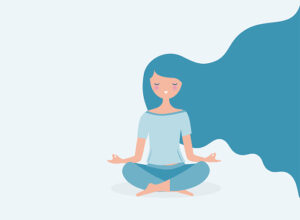 With the advancement in therapeutic techniques, there are now many relaxation techniques that can be used to help people with ADHD. By the name of it, relaxation techniques mean just that: techniques that help you relax. Over time, there have been various techniques that have emerged and have proven effective. These include:
With the advancement in therapeutic techniques, there are now many relaxation techniques that can be used to help people with ADHD. By the name of it, relaxation techniques mean just that: techniques that help you relax. Over time, there have been various techniques that have emerged and have proven effective. These include:
- Progressive muscle relaxation: This involves tensing and relaxing different muscle groups in the body. It starts with the feet and moves up to the face.
- Deep breathing exercises: Breathing is a rather simple task. However, many of us do not breathe correctly. This exercise helps to improve our breathing technique and allows us to take deeper breaths.
- Yoga: Yoga is a traditional practice that has many benefits. It helps to improve flexibility, strength, and balance. It involves various postures and breathing exercises.
- Meditation: Meditation is a practice that helps to focus the mind and achieve inner peace. It has been shown to be helpful in reducing stress and anxiety. It works by clearing the mind of distracting thoughts.
- Visualization: Visualization is a technique that involves picturing oneself in a calm and relaxing environment. This is helpful for ADHD by reducing stress and anxiety levels.
- Biofeedback: This is a rather new technique that uses sensors to measure various bodily functions, such as heart rate and muscle tension. This information is then used to help the person learn how to control these functions.
- Aromatherapy: This is an alternate therapy that uses essential oils to promote relaxation. It is believed that certain scents can help to improve mood and reduce stress levels.
- Acupressure: Similar to aromatherapy, acupressure is a therapy that uses pressure points to promote relaxation. It is believed that applying pressure to certain points on the body, it can help to relieve stress and tension.
All of these techniques work by helping you focus on the present moment and clear your mind of any intrusive thoughts. This can help improve symptoms of ADHD and also its accompanying anxiety and depression.
It is important to find a relaxation technique that works for you and that you can commit to doing it on a regular basis. Just like with exercise, consistency is key when it comes to reaping the benefits of relaxation techniques.
Find other outlets
As one may be aware, ADHD is characterized by mostly inattentive and hyperactivity, but impulsivity as well. This can make it difficult to focus on tasks and stay on track. It is important to find other outlets for this energy. Some examples include:
- Exercise: Exercise is a great way to release energy and help improve focus. It has also been shown to help with symptoms of anxiety and depression.
- Art: Art can be another outlet for creativity and self-expression. It can also be used as a form of relaxation.
- Pets: Pets can provide companionship and unconditional love. They can also help to reduce stress levels.
- Socializing: Socializing can help to improve mood and reduce isolation. It is also a great way to stay connected with others.
There are many other outlets that can be helpful for ADHD. It is important to find what works for you and to commit to doing it on a regular basis.
Join support groups
 As one may guess from the name, support groups provide support for people with ADHD. This can be in the form of emotional support, practical advice, or simply a place to vent. Support groups can be helpful in reducing isolation and improving mood. They can also provide a sense of community and belonging.
As one may guess from the name, support groups provide support for people with ADHD. This can be in the form of emotional support, practical advice, or simply a place to vent. Support groups can be helpful in reducing isolation and improving mood. They can also provide a sense of community and belonging.
There are many different types of support groups available. Some are specific to ADHD, while others are for parents of children with ADHD. There are also online support groups available.
It is important to find a group that you feel comfortable with and that you can commit to attending on a regular basis.
The distinctive key characteristic of support groups is that members share a common goal or experience. This provides a sense of community and belonging, which can be helpful in reducing isolation and improving mood.
Use handy tools and resources
Some of the key symptoms of ADHD make people with the condition more likely to lose things. This can be frustrating and lead to a feeling of disorganization. There are many handy tools and resources available to help with this. Some examples include:
- Key finders: These can be attached to keys, wallets, or other items that are prone to being lost. They use GPS technology to help you locate the item if it is lost.
- Tracking apps: There are many tracking apps available that can be used to track items or people. This can be helpful in keeping track of important items or loved ones.
- Organizational tools: There are many different types of organizational tools available, such as planners, calendars, and to-do lists. These can help to keep track of tasks and stay on top of responsibilities.
- Sticky notes: Sticky notes can be used to remind yourself of important tasks or appointments. They can also be used to leave messages for others.There are many other handy tools and resources available to help with the symptoms of ADHD.
- Voice assistant: Voice assistants, such as Siri or Alexa, can be used to set reminders, alarms, and timers. They can also be used to look up information or answer questions.
- Smartwatches: Smart watches can be used to track fitness goals, monitor sleep, and set reminders. They can also be used to make phone calls and send text messages.
There are many other tools and resources available to people with ADHD. It is important to find what works for you and commit to using it on a regular basis.
Track your symptoms
ADHD symptoms can be unpredictable and vary from day to day. This can make it difficult to manage the condition. Tracking your symptoms can be helpful in many ways. It can help you to:
- Understand your symptoms and how they vary from day to day.
- Identify triggers that make your symptoms worse.
- See how your symptoms are affected by different activities or treatments.
- Share accurate information with your doctor.
There are many different ways to track your symptoms. You can use a paper journal, an app, or even just a notebook. It is important to find a method that works for you and to track your symptoms on a regular basis.
Dabble in humor
This may seem like an odd coping mechanism, but humor can actually be quite helpful for people with ADHD. It can provide a distraction from intrusive thoughts, help to reduce stress levels, and improve mood.
Humor can also be used as a tool to help manage symptoms. For example, if you are struggling to focus on a task, you may want to try watching a funny video or reading a comic book. If you are feeling overwhelmed, you may want to try making a list of things that make you laugh.
This can also be a way to take your condition in a lighter manner and to feel more in control of it.
There are many different ways to use humor as a coping mechanism. It is important to find what works for your mood.
Refrain from multitasking
 It is a common tendency for people with ADHD to try to do too many things at once. This can lead to feeling overwhelmed and stressed. It is important to focus on one task at a time and give it your full attention.
It is a common tendency for people with ADHD to try to do too many things at once. This can lead to feeling overwhelmed and stressed. It is important to focus on one task at a time and give it your full attention.
This may mean breaking tasks down into smaller, more manageable pieces. It may also mean setting aside specific times for each task. For example, you may want to set aside 30 minutes to check your email and then move on to another task.
It is also important to avoid multitasking when it comes to activities that require focus and concentration. For example, you should avoid watching television while working on a project.
Multitasking can be difficult for people with ADHD, but it is important to focus on one task at a time.
Be a clock watcher
Lastly, time management can be one of the most difficult things for people with ADHD. It is important to find ways to keep track of time and stay on schedule.
One way to do this is to be a “clock watcher.” This means that you check the clock frequently to see how much time has passed. You may also want to set alarms or timers to help you stay on track. It is also important to have a general understanding of how long tasks will take to complete. This can help you plan your day and avoid taking on more than you can handle.
Time management can be difficult for people with ADHD, but it is important to find ways to stay on track. Clock watching is one way to do this. Some other ways of managing time include setting alarms, and timers, and understanding how long tasks will take.
There are many different coping mechanisms that can be helpful for people with ADHD. It is important to find what works for you and to commit to using it on a regular basis. These coping mechanisms can help you manage your symptoms and improve your quality of life. The most important thing is to not give up and to keep trying new things. You never know what might help you!
Things To Keep In Mind
Now that we know of some of the most effective ADHD coping mechanisms, let us learn some things to keep in mind while using them:
- While some of the coping mechanisms may seem to be very effective, they might not work for everyone. So, it is important that you find what works best for you and stick to it.
- Do not try to do everything at once. Take things one step at a time so that you do not get overwhelmed.
- Make sure to keep a track of your symptoms so that you can see how well the coping mechanism is working for you.
- Do not get discouraged if something does not work immediately. Some coping mechanisms may take some time to show results.
- Lastly, these ADHD coping mechanisms are NOT a substitute or alternate for any medication that has been prescribed to you. They should be used in addition to the medication for maximum effect.
ADHD can be a difficult condition to live with, but there are many ways to cope with it. These are just a few of the many coping mechanisms that have been found to be effective for those with ADHD.
Conclusion
To conclude our blog post, we now know of 12 most proven and helpful ADHD coping mechanisms. These can be used to help us manage our symptoms, and lead a better quality life. Do not forget that different things work for different people, so find what works best for you and stick to it! Lastly, these coping mechanisms should not be used as a replacement for any medication that has already been prescribed by a professional.
If you or someone you know is looking for psychological help, Therapy Mantra is here for you. We are the leading providers of online therapy and counseling. Our team of highly trained and experienced therapists can provide assistance at the most affordable rates. Contact us today to learn more about our services. You may also visit our website to book an online therapy session or download our free Android or iOS app for more information.
